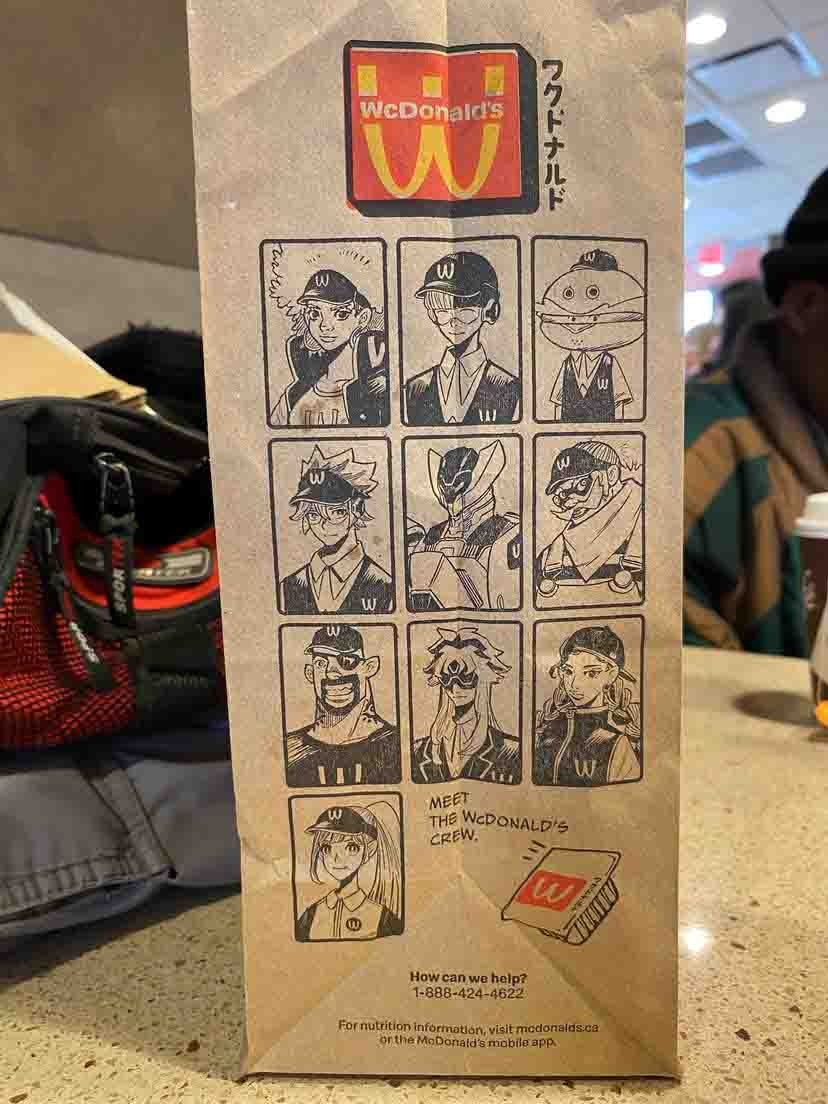McDonald’s, the globally recognized fast-food giant, recently underwent a name change in the United States, albeit temporarily. From February 26th to March 18th, 2024, the iconic “M” was replaced with a “W,” transforming the restaurants into “WcDonald’s.” This surprising shift was part of a unique marketing campaign in collaboration with the world of anime.
The Anime Connection: McDonald’s Becomes WcDonald’s
The reason behind the name change lies in McDonald’s partnership with popular anime series. In some of these shows, the restaurant appears as “WcDonald’s” to avoid copyright infringement. This collaboration extended beyond a simple name change. McDonald’s featured anime-themed comics on their to-go bags and introduced a new “Savory Chili” sauce.
 McDonald's Anime Themed Bag
McDonald's Anime Themed Bag
Further cementing the partnership, a four-episode anime special focusing on WcDonald’s was produced, each episode exploring a different genre: action, romance, mecha, and fantasy. These episodes were available for viewing on the dedicated website, wcdonalds.com. This cross-promotional strategy aimed to tap into the growing popularity of anime and engage a younger audience.
A Real-Life WcDonald’s Experience: Confusion and Milkshakes
The name change wasn’t just a virtual phenomenon. It manifested in real-world locations, leading to some confusion among customers. One such instance involved Sarah Blan and Nate Blan, who encountered a WcDonald’s during a trip to Oklahoma. They ordered chocolate milkshakes that were disappointingly runny, leading to a complaint. However, it was only upon returning home that they noticed the “WcDonald’s” label on the cup, sparking confusion and disbelief.
This anecdote highlights the unexpected real-world impact of the marketing campaign. While intended to be a fun and engaging promotion, it also led to some genuine bewilderment among customers unfamiliar with the anime connection.
Back to the Golden Arches: A Temporary Transformation
While the WcDonald’s transformation generated buzz and intrigue, it was a temporary endeavor. After a few weeks, the familiar “M” returned, and McDonald’s reverted to its original branding. This limited-time campaign allowed McDonald’s to experiment with a new image, engage with a different demographic, and generate significant media attention.
While some, like Sarah Blan, may have had less-than-ideal experiences during the WcDonald’s phase, the campaign ultimately served its purpose as a unique and memorable marketing initiative. The change, though fleeting, provided a glimpse into how major brands can leverage popular culture trends to connect with new audiences and create buzz around their products.